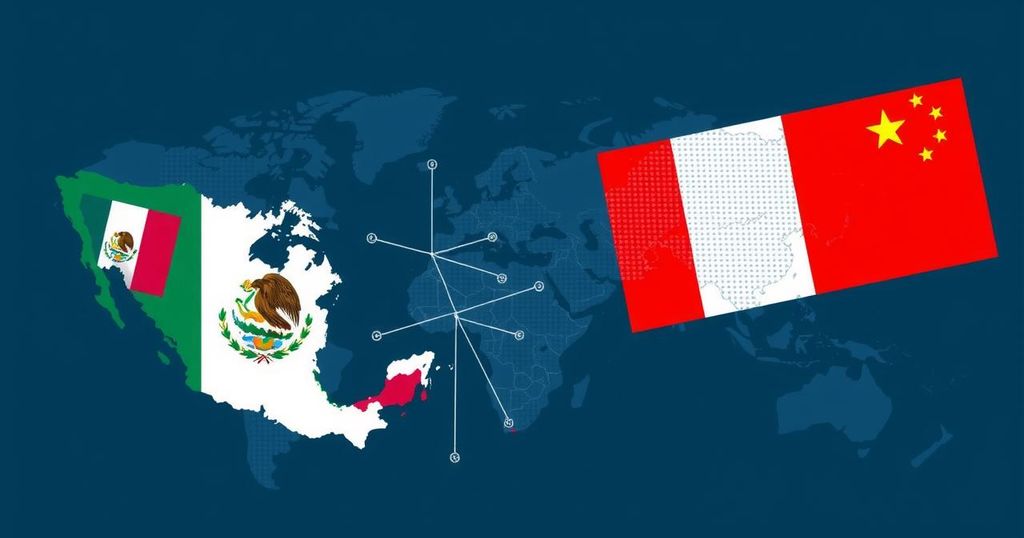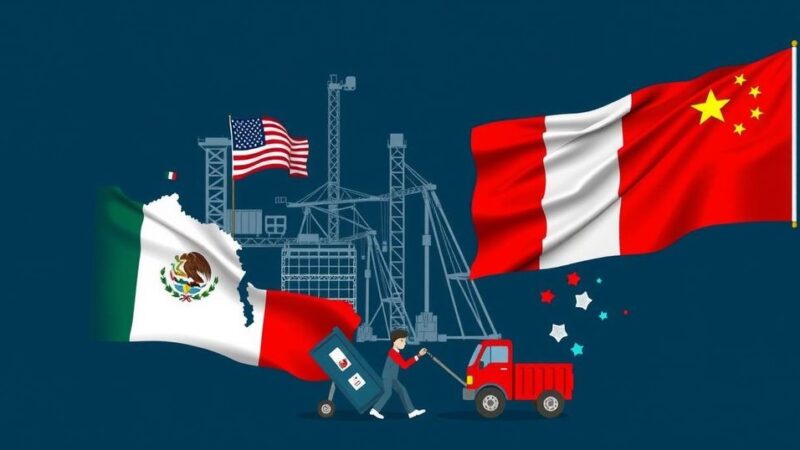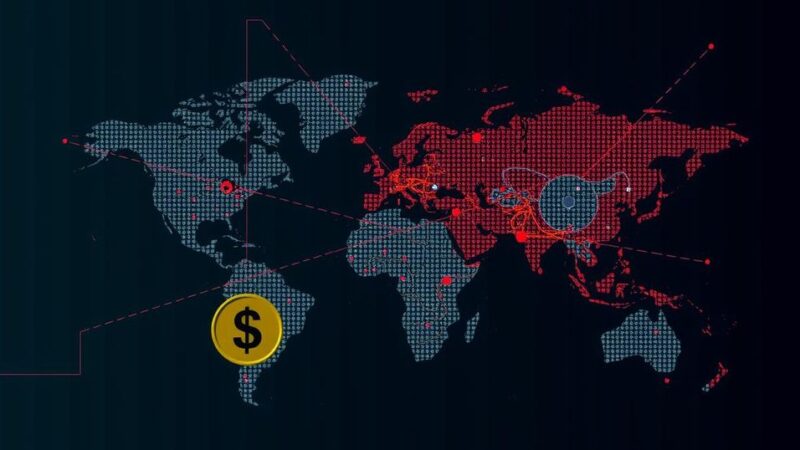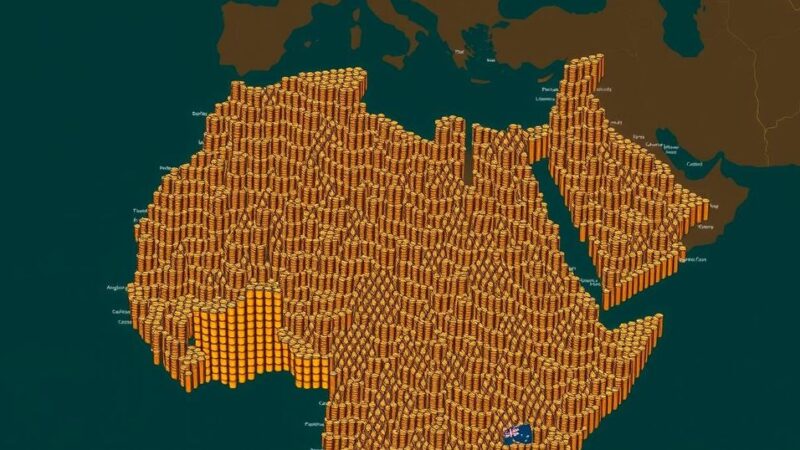President-elect Donald Trump intends to impose substantial tariffs on imports from Mexico, Canada, and China in response to illegal drug trade and immigration. He plans a 25 percent tariff on goods from Mexico and Canada and a 10 percent tariff on Chinese imports. This move reflects his ongoing protectionist trade strategy, raising significant economic implications.
On November 26, 2024, US President-elect Donald Trump announced his plan to implement significant tariffs on imports from Mexico, Canada, and China, reacting to challenges related to illegal drug trafficking and immigration. In a series of statements on Truth Social, he proclaimed his intention to enact a 25 percent tariff on all goods from Mexico and Canada, and a 10 percent tariff on Chinese products, exceeding existing duties. Trump asserts that these tariffs are a critical element of his economic strategy, aimed at correcting perceived trade imbalances and fostering domestic manufacturing.
Historically, Trump’s trade policy has been characterized by a protectionist stance, particularly during his first term, in which he engaged in a trade war with China, inciting retaliatory tariffs that impacted US agricultural producers. The US maintains significant economic ties with Mexico and Canada under the United States-Mexico-Canada Agreement (USMCA), complicating the latter two nations’ potential responses to Trump’s tariff threats.
Economic analysts remain divided; some argue the tariffs could ignite inflationary pressures and hinder economic growth, as the costs of tariffs are typically absorbed by consumers. Nonetheless, Trump’s supporters believe that these trade measures may serve as effective negotiating tools for securing more favorable agreements and reviving American industrial jobs.
The announcement by President-elect Trump regarding tariffs on Mexico, Canada, and China highlights the ongoing tension in US trade policy. Trump’s approach draws on previous practices during his first term, where he prioritized a protectionist agenda. The tariffs are positioned as necessary actions against the illegal drug trade and immigration, framing them within a national security context. While the strategic use of tariffs is not new, their potential economic repercussions remain a significant topic of discourse among economists and international trade experts.
In conclusion, President-elect Trump’s proposed tariffs on goods from Mexico, Canada, and China reflect his commitment to a robust and protectionist trade agenda as he assumes office. While the tariffs are designed to address issues of illegal immigration and drug trafficking, they also raise concerns about potential economic fallout, including inflation and retaliatory measures from trading partners. Observers will be closely monitoring how these policies are implemented and their subsequent impact on both US consumers and international relations.
Original Source: jordantimes.com






